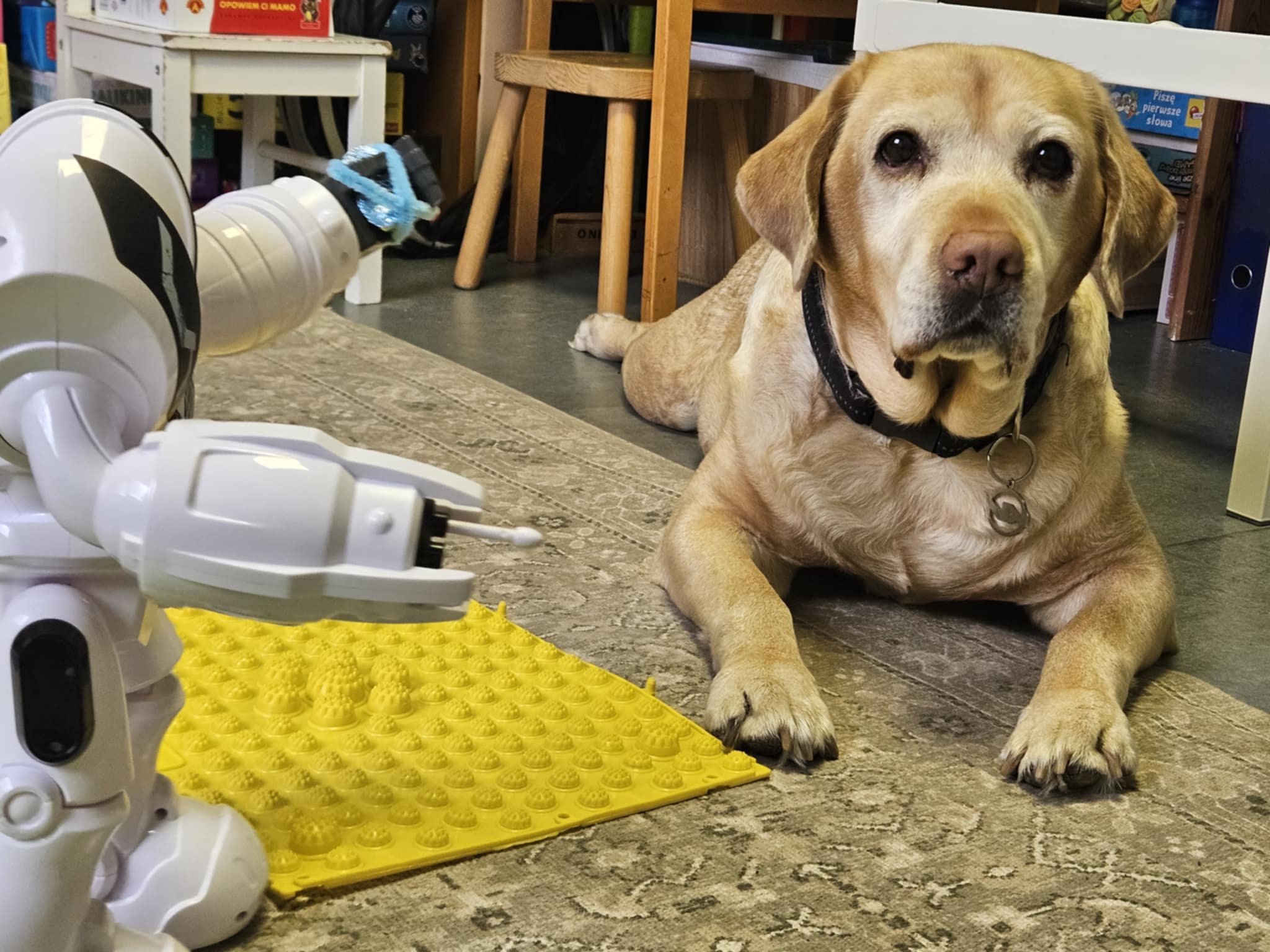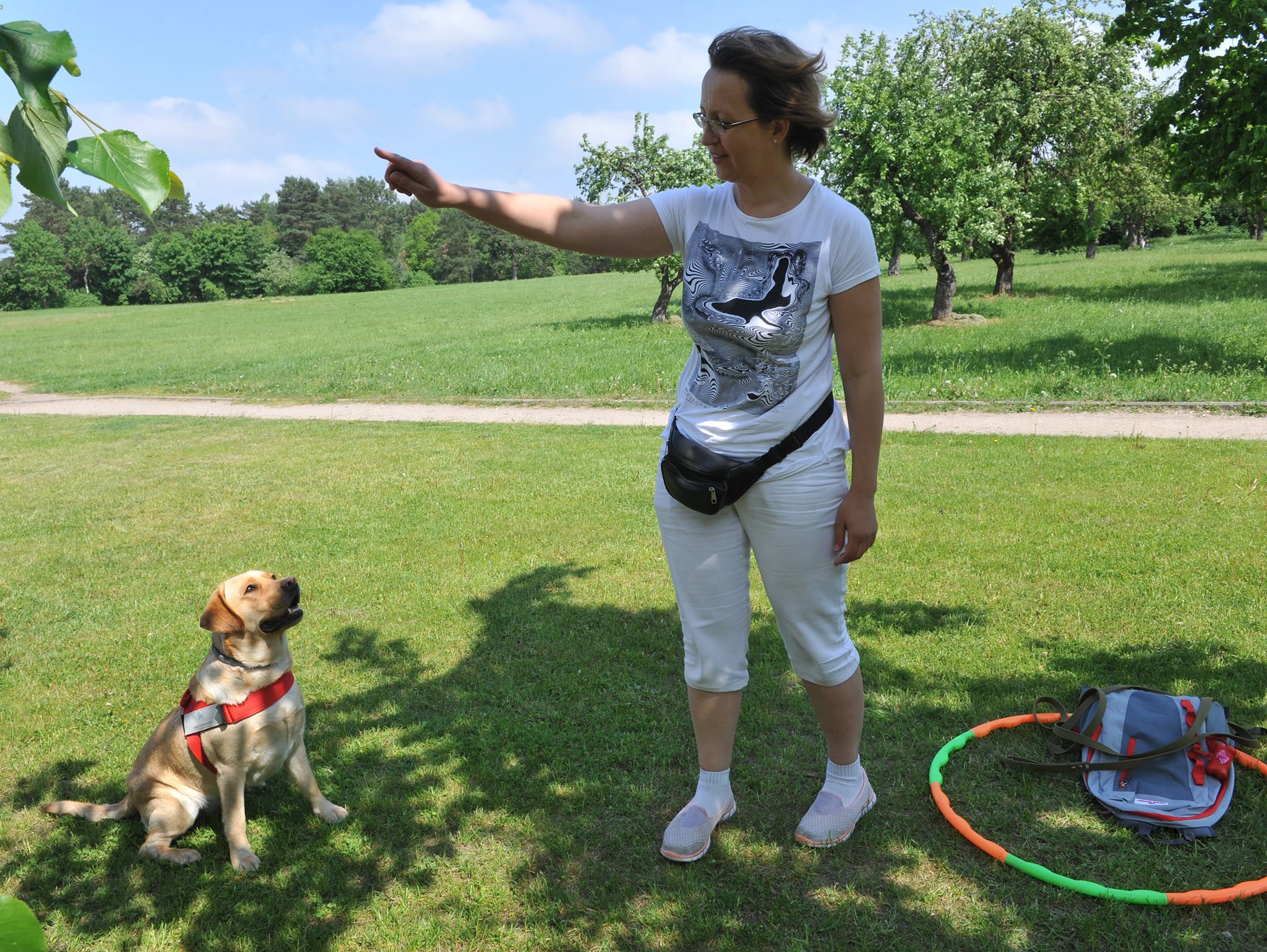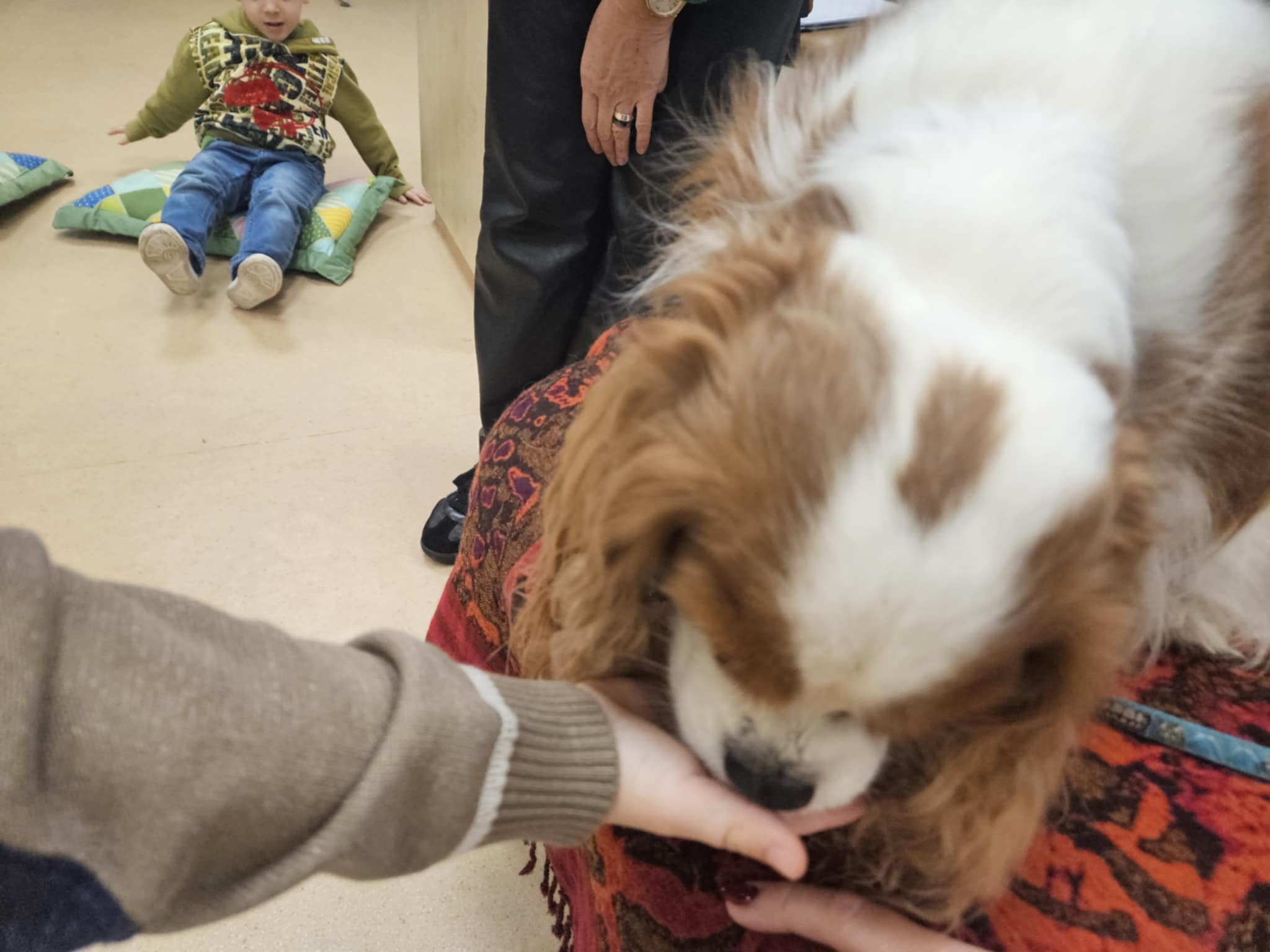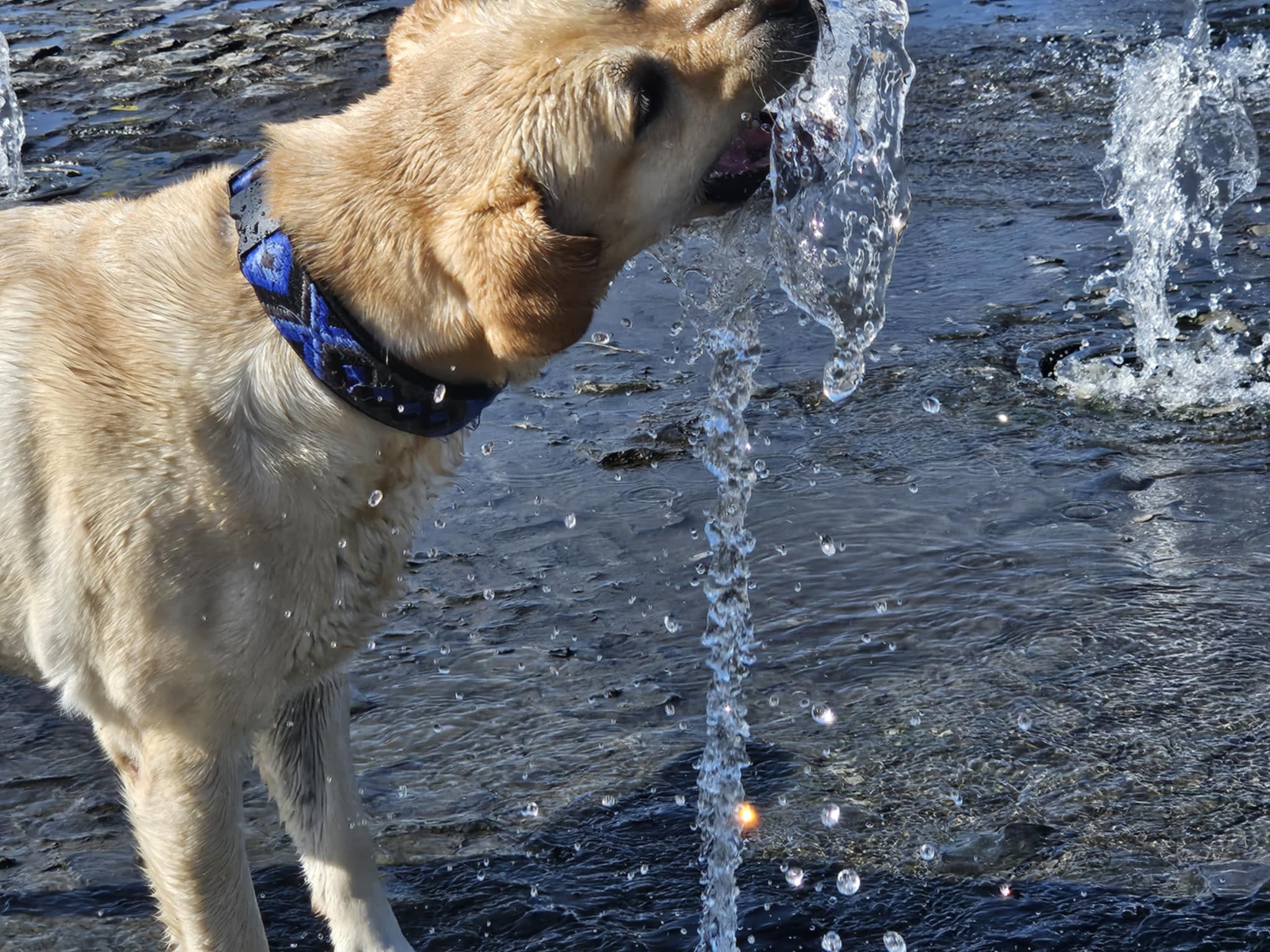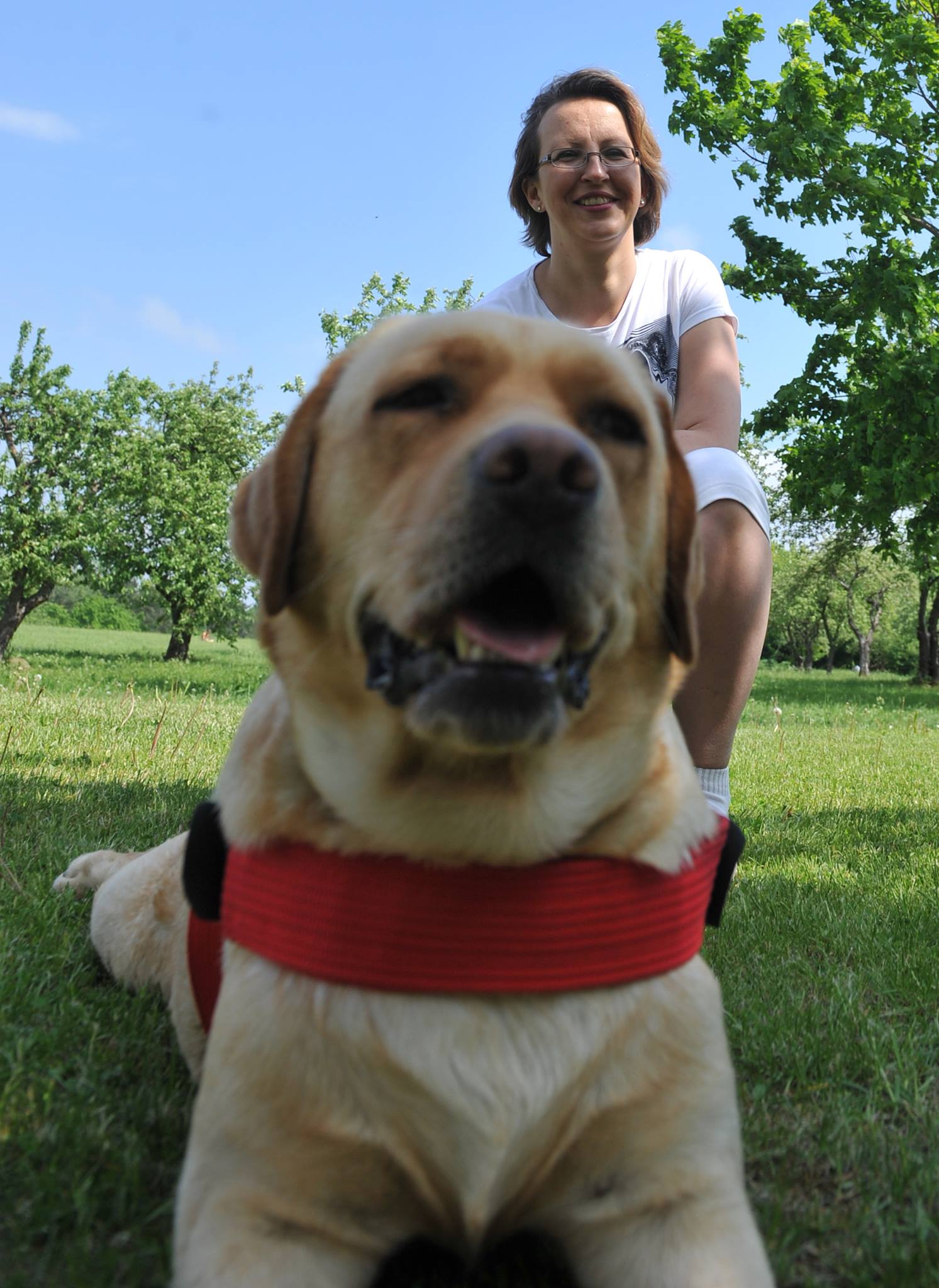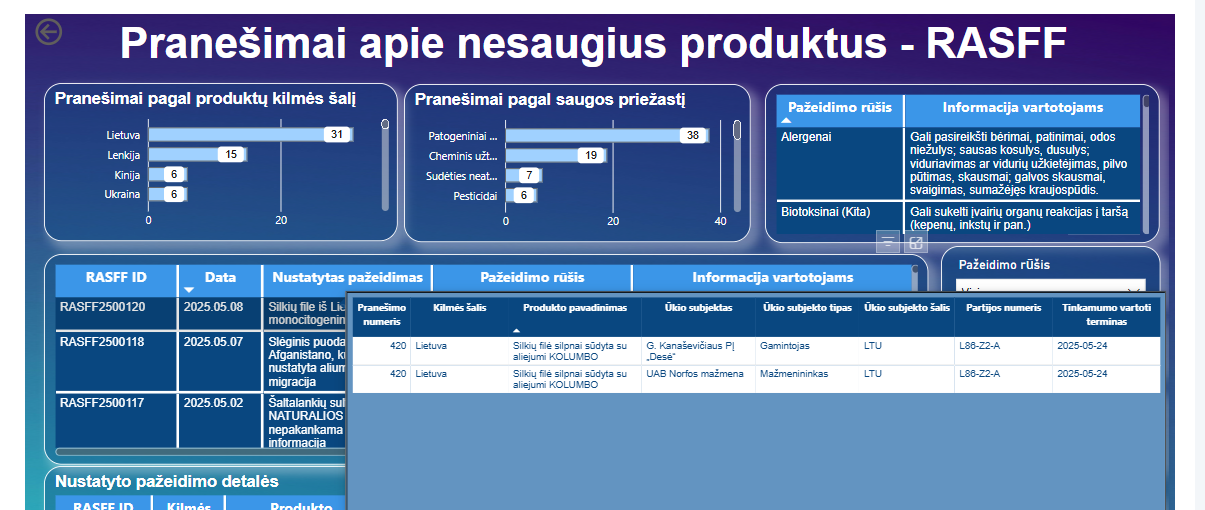We all change the lives of each other

Joan and its pets are well known to the children and staff of the Vilnius « Hope » Special Schools-Multifunctional Center, the youth of the Vilnius SOS Children’s Village, the Vilnius Special Kindergarten « Skuškutis », the Lithuanian Blind and Visually Impaired Center, the Lithuanian Autism Association « Rain Children » and other communities.
J. Grygutis prepared three therapeutic dogs: Labrador Retriers Kiia and Moka and Cavalier King Charles Spaniel Lu. Kia is now working the least because she is almost eleven years old. Lu – nine. Young Labrador – three years – has been working with Joana for a year and a half.
Commonness: Joana’s dogs are different, but they are united by the desire to interact with people. J. Grygutis Photo by Personal Archive
– Do you think canine therapy is effective?
– 300 percent. – I allocate 100 percent to each dog. I am not from people who, when they do not believe in something, prepare a different and another dog (now I’m thinking about the fourth, because my old team needs to be spent a little bit on a well -deserved rest). I actually believe in what I do. I have worked for different jobs. There was a period when I was working for one company and seemingly good for me, but it was really difficult because I didn’t believe what I was doing. Now I really believe, I really see the benefits and I really like it. I see that it is good for others.
– What do dogs like it?
– Yes. Of course, they get tired. And I’m tired. We are all tired, but we like what we do. Mostly I only bring one dog to work, so when I leave, I see the frustration of others. I am also painful for myself because I see how they all wait: which is today, which is today? A, she. Okay I’ll wait …
J. Grygutis Photo by Personal Archive
– How long does it take to prepare a therapeutic dog?
– In each case, differently. I prepared Kia in maybe half a year, but it was a very intense job because I had no other obligations, so I was focused on getting ready. We took longer with Lu as he got to me for three years, an adult male, slightly traumatized. However, I was gradually adapting and I think he may have even forgotten his past now. When working with pay, time goes out because I have my daily work, family obligations and all this slows down the process. What’s more, she had a rear leg surgery – I want it to be completely healed. We are preparing with her slowly.
J. Grygutis Photo by Personal Archive
– All three of your dogs are different characters and breeds. Does it depend on the ability to agree with children? I have heard that the dog is selected according to the diagnosis – depending on what the child needs.
– More than diagnosis, but by what dog will work more effectively with. And I try to take it into account. I choose the dog based on the reasons for what I was approached by the child’s age. If a child is a kindergarten age, I usually travel with me because he is a tiny, more suitable for a young child. But not always. I also have preschoolers with whom LU is probably not worth the intensity of the session, so a higher Labrador is needed.
J. Grygutis Photo by Personal Archive
In the past, we were taught that the child gets used to one particular dog and the dog should not be replaced in the process of a particular dog and therapy. I have noticed that children are often curious to meet other dogs as well. Moreover, the bitching is rusted. In the past, in such cases I came to a consultation without a dog, but I saw that the child used to the dog was sad. Now I have changed the tactics and I take Lu to consultation. This has proved its worth, so the dog can be replaced.
For example, when working with children with autism spectrum disorder, it is necessary to change the dog even to prevent the child from firing, that the dog is just one, and if it is different, it is no longer a dog. Autistic children often have very stereotypical thinking. I am a group of group session in a special school where everyone waited a few weeks to meet with a puppy and one boy who wanted the meeting most of the meeting, did not attend it at all. After the meeting, he asked me, where’s the dog? It turns out he has a Scottish Terrier at home, so he was waiting for such a dog, and if not, it’s not a dog.
J. Grygutis Photo by Personal Archive
– Can any breed dog be therapeutic?
– Maybe I’m very categorical, but certainly not. Maybe it may be, but the effort and risk, in my opinion, are inadequate. Dogs live too briefly to make them change their nature. If he needs to jog, guard, graze, then why should we change them? I don’t know. Laughing, I say that maybe someone would do a ballerina from me, but how much it should work … The same with dogs – maybe everyone can be taught, but I think it is not worth breaking the dog’s nature simply because a person has thought of using a pet therapy.
– If the dog shows at least some aggression, the path to canine therapy is already closed?
– That aggression can be different. Where did he show it? In what circumstances? In whom? If the dog is unbearable for other dogs, it does not mean that humans will be intolerant either. Here, the dogs are examined by the Canine therapy Association: if they are not very positive to tolerate the presence of another dog, the exam notes record that they should not participate with other dogs during group activities – it must be alone. However, a coach could tell about a particular dog whether he can work as a therapeutic dog or not.
J. Grygutis Photo by Personal Archive
– Tell us what a dog can be useful for a psychologist? Just because it is near the child?
– Yes, sometimes the presence of a dog alone makes it easier for the child to come to a psychologist. I’ve been working as a psychologist for many years. In the past, there was an attitude that only those who are badly with their heads go by a psychologist, psychiatrist, psychotherapist. Now a lot has changed, but visiting a psychologist’s consultation is still stigmatized and some children are easier to go out of persuasion if they know that there will be an animal. The only news that it will be a puppy can help the process itself, especially when it comes to young people – school -age and teenage children.
Very often we are talking about emotions, listening to another. The dog helps to nurture empathy. For example, a child tells something and caresses the dog, and the dog is leaving. Then we can talk about different things: why did he get away? Did he feel unnecessary? Did you give him a non -verbal sign? It helps the child not only observe the dog, but also move what they notice to their daily environment. Perhaps he will also watch others more often in everyday life, paying attention to their behavior, not just words. After all, we communicate more than just language.
– So can you say that you change the lives of both children and dogs?
– We all change the lives of each other.
– You can remember what your pets are for you?
– Our earlier Labrador loved me to observe and repeat what I was doing, only retroactively. For example, I planted tulip bulbs and it dug them.
J. Grygutis Photo by Personal Archive
Interestingly, dogs are attached to me differently. Kia is everywhere and always beside me – relaxes only when the whole family is home. Lu is my shadow at all 200 percent, he even sleeps on my head on the armchair and does not go to bed until I go to bed. He pays to listen to me perfectly, but when the middle son, who is currently living separately, returns home, she stops hearing me – then they are together. Because Michael spent a lot of time with her through quarantine and after quarantine, taking her into the woods for 3-4 hours – they just disappeared in that forest. So, if Michael returns home, she knows that she will go to the forest for a long time and does not retreat.
J. Grygutis Photo by Personal Archive
– Your dogs don’t try to self -help, protect against other people, family members?
– Definitely not good. It seems to me that the most is not suitable for dogs that are described as one host. Cavalrs are certainly not that. They can bark on all behind the fence, but if someone enters the area, he is a friend because the enemy cannot enter us. They have different expectations for each of our family members. If a man does something outside, they follow. In winter, it helps dig out the snow or digs back. In the spring, other works. If a man fertilizes plants, they collect fertilizers. As a result, we can only use organic now, because if we fertilize, we cannot release dogs to the yard for three days because it is released and the shrubs do not leave the fertilizer.

